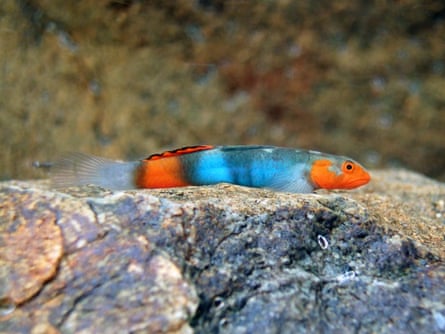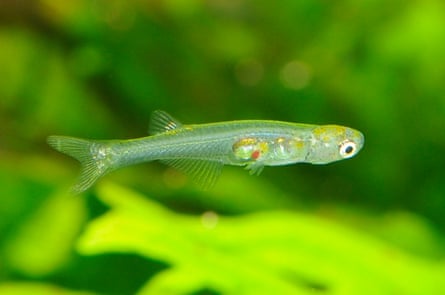Scientists are celebrating 212 “new” freshwater fish species, including a blind eel found in the grounds of a school for blind children and a fish named Wolverine that is armed with a hidden weapons system.
The New Species 2021 report, released by the conservation organisation Shoal, shows just how diverse and remarkable the world’s often undervalued freshwater species are, and suggests there is plenty more life still to be discovered in the world’s lakes, rivers and wetlands.
“It’s fascinating that over 200 new freshwater fish species can be described in just a single year,” said Harmony Patricio, Shoal’s conservation programme manager. “You might see this level of new discovery for organisms like plants or insects, but not really for vertebrates.
“It means there are still hundreds and hundreds more freshwater fish out there in the world that scientists don’t know about yet,” she said. “Also, many of the newly described species have pretty unique and unexpected traits.”

One of those unexpected physical traits is the hidden weapons system of the Wolverine pleco (Hopliancistrus wolverine), which earned it an X-Men-inspired name. “This species has strong lateral curved spikes called odontodes tucked under the gill covers that can be extended to jab anything that tries to mess with them,” Patricio said.
“Other related species in the same family, even those with big spines, aren’t known to demonstrate such behaviour. The researchers who described this species ended up with quite a few finger injuries while collecting specimens from the wild.”
An average of four freshwater fish species a week were newly described last year. Other findings include the bright red Mumbai blind eel (Rakthamichthys mumba), which has no fins, scales or eyes, and was found at the bottom of a well in the grounds of a school for blind children; the tiny, translucent Danionella cerebrum, discovered in southern Myanmar and only slightly larger than a thumbnail; and the colourful Kijimuna and Bunagaya gobies (Lentipes kijimuna and Lentipes bunagaya) in southern Japan, named after woodland spirits in Okinawan folklore.
Each of the 212 discoveries offers new possibilities for scientists to increase their understanding of freshwater species, including their anatomy, evolution and the connections between other creatures and their habitats.

The male Danionella cerebrum, for example, has got researchers curious about its ability to make a drumming sound, most likely by tapping a thin strip of cartilage on its swim bladder, like a drumstick – a relatively complex and unusual form of communication for such a tiny creature. The same species has no roof to its skull – its brain cavity is covered only by a thin layer of skin – making it possible for scientists to study brain activity twinned with function without harming the fish.
There are at least 18,267 species of freshwater fish, according to the standard reference book, Eschmeyer’s Catalog of Fishes. But the overall freshwater picture is concerning. According to the World’s Forgotten Fishes report, which Shoal, WWF and other partners published in 2021, more than a third of freshwater fish species are threatened with extinction, despite their importance to biodiversity and as a food source to billions of people.
“We know that 80 species of freshwater fish have gone extinct in modern times, while there are usually around 150-200 or more new species discovered in an average year,” said Patricio. “But population levels of many freshwater fish have declined massively over the past 50-plus years.

“There’s a whole suite of factors that has led to their decline, but the primary causes are impacts from invasive species, pollution, overfishing and habitat loss and degradation.”
More work is needed to protect lakes, rivers and other freshwater sources, and their inhabitants, including other numerous “new” species waiting to be discovered. Shoal hopes its inaugural new species report will raise awareness “about the freshwater biodiversity crisis we’re facing”, said Patricio, “so people realise freshwater fish are disappearing at twice the rate of marine or terrestrial species.
“Hopefully,” she said, “they’ll be motivated to support conservation efforts and encourage their governments to do more.”
Find more age of extinction coverage here, and follow biodiversity reporters Phoebe Weston and Patrick Greenfield on Twitter for all the latest news and features
